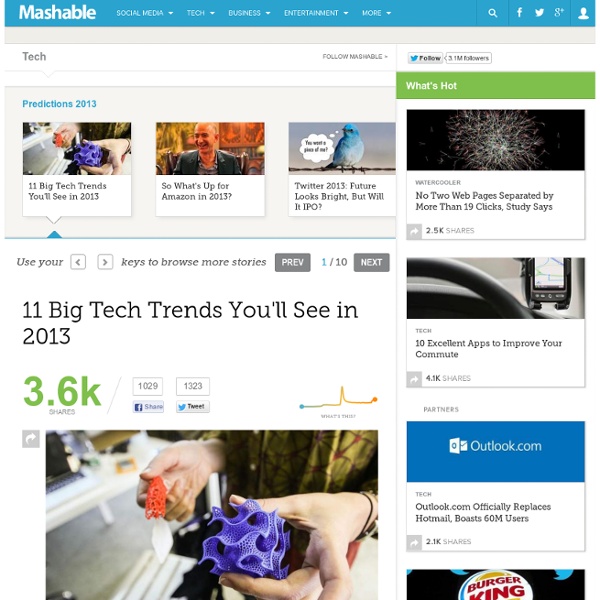Tech Jobs In 2013: Open Source All The Way Down
It's a good time to be in technology. According to the December 2012 Dice hiring survey, 64% of hiring managers and recruiters surveyed expect to hire more tech employees in the first six months of the year, versus 47% for non-tech roles. Life looks even better for tech professionals with open source experience. That's because the industry's hottest trends are being driven by open-source software. Used with permission from Indeed.com. PaaS, which isn't uniformly open source, has prominent open-source offerings like VMware's Cloud Foundry and Red Hat's OpenShift helping drive the market. It's Not Just Open Source Yes, I know. In Big Data, demand is high for know-how in a range of open-source projects, as Dice and Wikibon note. Cloud computing, too, is largely an open-source phenomenon, though the 8,000-pound gorilla known as Amazon is hardly a big open-source contributor. Training Made Easier Which leaves us with just one problem: how to get trained on all this great open-source software?
Tenth Grade Tech Trends — Product Design
A few months ago, my fifteen-year-old sister told me that Snapchat was going to be the next Instagram. Many months before that she told me that Instagram was being used by her peers as much as Facebook. Both times I snickered. Learning from past mistakes, I took some time over the holiday break to ask my sister many, many questions about how she and her friends are using technology. Below I’ve shared some of the more interesting observations about Instragram, Facebook, Instant Messaging, Snapchat, Tumblr, Twitter, and FaceTime. I hope you’ll find them as informative, surprising, and humbling as I did. Instagram Looking at her Instagram feed, I noticed that the vast majority of photos were of people – not beautiful views, objects, or experiences. My takeaway: Facebook was smart to buy Instagram. Facebook She mentioned that she tries to visit Facebook as infrequently as possible. My takeaway: Facebook may have an irreversibly bad brand. Instant Message Snapchat Tumblr Twitter I don’t read links.
The Future Is Now: What We Imagined for 2013 — 10 Years Ago | Gadget Lab
Predicted for 2003 (above):Apple redefined the desktop, laptop, and MP3 player. The next insanely great thing: an LCD arm cuff that includes a PDA, wireless Internet, a mini iPod, and, of course, a phone. The iPhone bracelet's motion sensor allows you to scroll through apps and files with the flick of a wrist, its clasp holds a digicam for use during video calls, and its wireless ear clip lets you listen and speak to callers. And everything can be done via voice recognition or touchscreen. Talk about the right call. Illustration: Kenn Brown. Looking ahead to 2023:Flexible displays are so 2013.
Gadgets of 2013: the future is upon us
Models parade in Google Glass augmented reality eyewear at a New York fashion show. Photograph: Edward Le Poulin/Corbis iPhone 5S As per usual, it is expected that Apple will release an "S" update before moving up an integer. Possible features? When can I buy one? Apple iTV There has been speculation for some years that Apple would make a land grab for the TV market. Possible features? When can I buy one? Xbox 720 Microsoft's long-awaited follow-up to the Xbox 360, rumoured to be called the Infinity. Possible features? When can I buy one? Amazon phone The internet giant is said to be adding a phone to its range of Kindle readers. Possible features? When can I buy one? Augmented reality glasses Google and a company called Vuzix are lining up futuristic specs for people who can't bear not to be connected. Possible features? What this device's killer app will turn out to be is anyone's guess. When can I buy one? Nest Possible features? When can I buy one?
SAP and the ‘Nexus of Forces’
A perfect storm is developing, according to research firm Gartner. Four hugely disruptive technology trends are converging, bringing change and opportunity to the way businesses operate, and restructuring the IT industry as a whole. Gartner calls this the “Nexus of Forces”. It sounds like a old-style superhero, but it actually refers to four distinct yet increasingly intertwined technological trends: social, mobile, cloud computing and information: Social. SAP has intensively covered the disruption from Mobile, Cloud, and Information. But this year’s SAPPHIRE NOW conference in Madrid will be the first to cover the full Nexus of Forces, by filling out the cloud story, and adding more substantial social strategy. At this conference, we can look forward to keynotes that tell the entire end-to-end story of how SAP will help customers with the opportunities and challenges of the the Nexus Forces outlined by Gartner: Gartner predicts that: Related posts:



